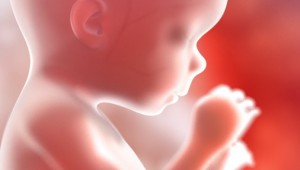Our Physical God
 It’s Christmas time again, and the Church focuses on the Incarnation, a word coming from the Latin “in carne,” which means, “in the flesh.” Christmas is God in the flesh: no longer only an eternal Spirit who fills the universe, but our brother, whom we can hear, see, and touch.
It’s Christmas time again, and the Church focuses on the Incarnation, a word coming from the Latin “in carne,” which means, “in the flesh.” Christmas is God in the flesh: no longer only an eternal Spirit who fills the universe, but our brother, whom we can hear, see, and touch.
One of the reasons he did this was to empower us to love him, and to love our neighbor.
The first Christians learned how to love, because the source of love, the Christ who sacrificed himself, was personally known to them. They saw and touched him.
“That which was from the beginning, which we have heard, which we have seen with our eyes, which we have looked at and our hands have touched—this we proclaim concerning the Word of life. The life appeared; we have seen it and testify to it…” (1 John:1:1-2).
And when commanded not to speak about Jesus, they replied, “We cannot help speaking about what we have seen and heard.’” (Acts 4:20).
This contact with the humanity of Christ speaks to us of what we are to do now for the unborn. It is the contact with the human reality of their lives, and the human tragedy of their deaths, that is to impel us in our self-sacrificing love for them.
It is not the “nuance” of the super-sophisticated that impels self-sacrificing, life-giving action. It is contact with the humanity we serve. It is facing the injustice that oppresses human lives, and then making a human response to it that springs from the depths of our own humanity, grounded in the God who gave that humanity to us.
That is why we need to look at the pictures of the victims of abortion — Not simply at the pictures of the living baby in the womb, but the pictures of what abortion does to that baby (see both at Unborn.info).
The last thing supporters of abortion want to talk about is abortion. You will not hear them describe the procedure, much less show people what it looks like.
In his homily on July 3, Pope Francis said,
“We find Jesus’ wounds in carrying out works of mercy, giving to our body – the body – the soul too, but – I stress – the body of your wounded brother, because he is hungry, because he is thirsty, because he is naked, because he is humiliated, because he is a slave, because he’s in jail because he is in the hospital…Those are the wounds of Jesus today. …We need to touch the wounds of Jesus, we must caress the wounds of Jesus, we need to bind the wounds of Jesus with tenderness, we have to kiss the wounds of Jesus, and this literally. Just think of what happened to St. Francis, when he embraced the leper? The same thing that happened to Thomas: his life changed. ”
Let us touch the sufferings of the baby who is in danger of abortion, and be changed into fearless warriors for them.

